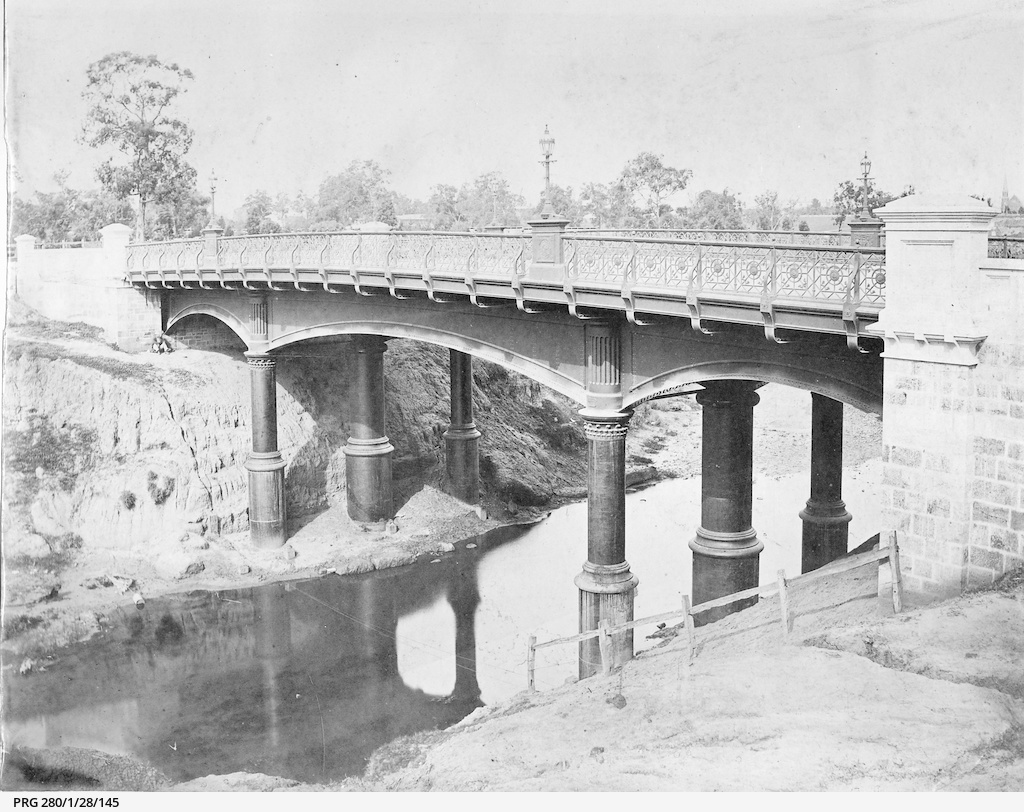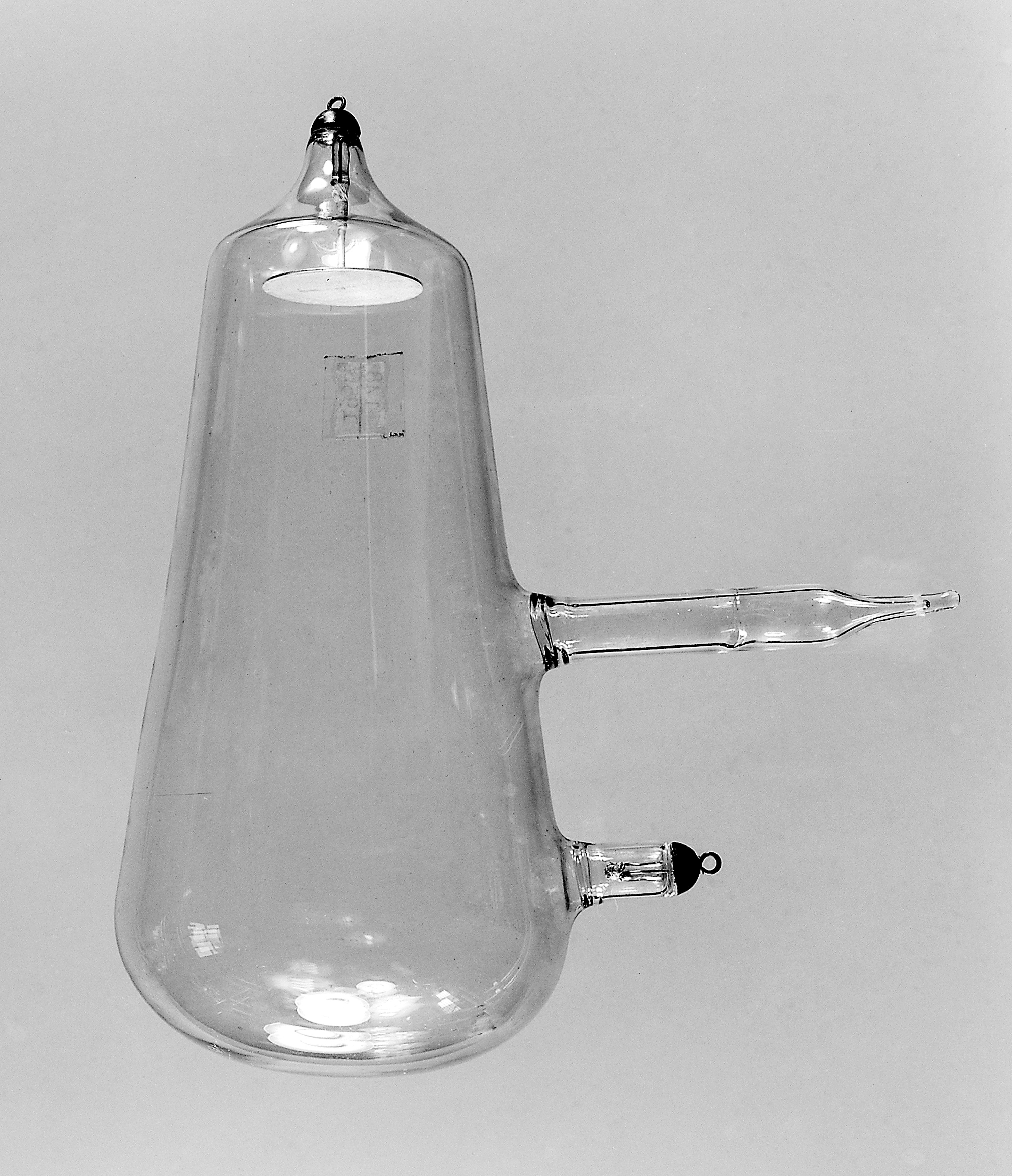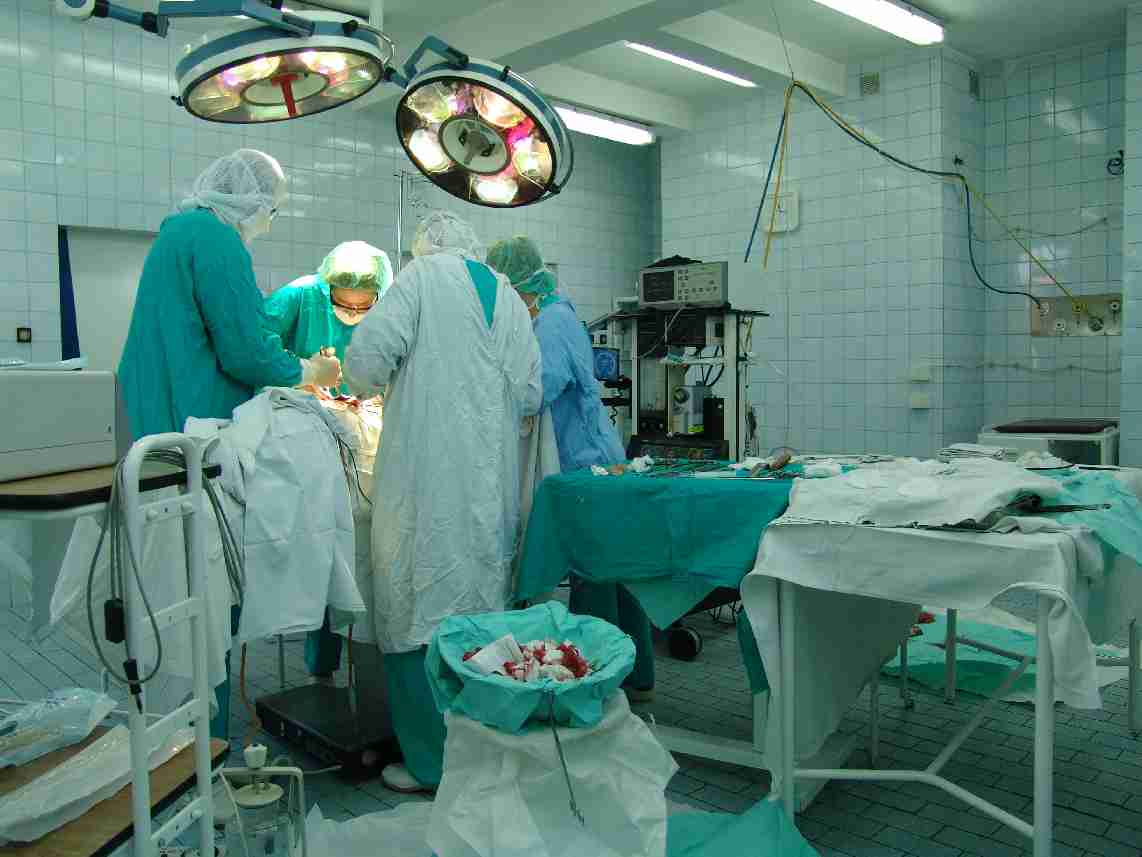|
Royal Adelaide Hospital
The Royal Adelaide Hospital (RAH), colloquially known by its initials or pronounced as "the Rah", is South Australia's largest hospital, owned by the state government as part of Australia's public health care system. The RAH provides tertiary health care services for South Australia and provides secondary care clinical services to residents of Adelaide's central metropolitan area, which includes the inner suburbs. The original Adelaide Hospital was built in 1840 at the eastern end of North Terrace, Adelaide, with its first building superseded in 1856 and many alterations and additions over the following 175 years. It was prefixed by the "Royal" in 1939. In 2017 it was replaced by the new hospital, built at the western end of North Terrace. The new hospital is the most expensive building ever built in Australia, and the most expensive hospital ever built anywhere in the world, at in construction and equipment costs. The redevelopment on the site of the old RAH is known as Lot Fo ... [...More Info...] [...Related Items...] OR: [Wikipedia] [Google] [Baidu] |
Adelaide
Adelaide ( ) is the capital city of South Australia, the state's largest city and the fifth-most populous city in Australia. "Adelaide" may refer to either Greater Adelaide (including the Adelaide Hills) or the Adelaide city centre. The demonym ''Adelaidean'' is used to denote the city and the residents of Adelaide. The Traditional Owners of the Adelaide region are the Kaurna people. The area of the city centre and surrounding parklands is called ' in the Kaurna language. Adelaide is situated on the Adelaide Plains north of the Fleurieu Peninsula, between the Gulf St Vincent in the west and the Mount Lofty Ranges in the east. Its metropolitan area extends from the coast to the foothills of the Mount Lofty Ranges, and stretches from Gawler in the north to Sellicks Beach in the south. Named in honour of Queen Adelaide, the city was founded in 1836 as the planned capital for the only freely-settled British province in Australia. Colonel William Light, one of Adelaide's foun ... [...More Info...] [...Related Items...] OR: [Wikipedia] [Google] [Baidu] |
Frome Road, Adelaide
Frome Road is a connecting road in the South Australian capital city of Adelaide. It starts from North Terrace in the Adelaide city centre, running in a northerly direction past the University of South Australia, the site of the old Royal Adelaide Hospital, now known as Lot Fourteen, the Institute of Medical and Veterinary Science and the University of Adelaide, and then through the Adelaide Parklands to the Adelaide Zoo where it turns northeasterly, crosses the River Torrens via Albert Bridge, and continues through the parklands to the intersection with Melbourne Street and Brougham Place in North Adelaide. It is one of the three roads connecting the city centre to North Adelaide, the others being King William Road and Montefiore Road. The road (and street) are named after Edward Charles Frome, a Surveyor General of South Australia. Frome Road is continued south into the city square as Frome Street, which was built in the 1960s and runs through the Adelaide city centre from ... [...More Info...] [...Related Items...] OR: [Wikipedia] [Google] [Baidu] |
SA Pathology
SA Pathology, (formerly the Institute of Medical and Veterinary Science (IMVS)), is an organisation providing diagnostic and clinical pathology services throughout South Australia for the public health sector. The headquarters are in Frome Road, Adelaide, and it has many patient collection centres and numerous laboratories located throughout South Australia. The Hanson Centre for Cancer Research was established in 1991 by SA Pathology, broadening its scope of research and becoming the Hanson Institute in 2001. As a not-for-profit organisation, SA Pathology bulk-bills patients for all Medical Benefits Schedule (MBS) pathology tests. In a recent article by ''Choice'' magazine, it was recognised as the only consistently "no gap, bulk billing" pathology provider in South Australia. History The organisation was established as the Institute of Medical and Veterinary Science (IMVS) in the late 1930s. The Institute began as an offshoot of the Royal Adelaide Hospital laboratories, be ... [...More Info...] [...Related Items...] OR: [Wikipedia] [Google] [Baidu] |
Hanson Institute
SA Pathology, (formerly the Institute of Medical and Veterinary Science (IMVS)), is an organisation providing diagnostic and clinical pathology services throughout South Australia for the public health sector. The headquarters are in Frome Road, Adelaide, and it has many patient collection centres and numerous laboratories located throughout South Australia. The Hanson Centre for Cancer Research was established in 1991 by SA Pathology, broadening its scope of research and becoming the Hanson Institute in 2001. As a not-for-profit organisation, SA Pathology bulk-bills patients for all Medical Benefits Schedule (MBS) pathology tests. In a recent article by ''Choice'' magazine, it was recognised as the only consistently "no gap, bulk billing" pathology provider in South Australia. History The organisation was established as the Institute of Medical and Veterinary Science (IMVS) in the late 1930s. The Institute began as an offshoot of the Royal Adelaide Hospital laboratories, be ... [...More Info...] [...Related Items...] OR: [Wikipedia] [Google] [Baidu] |
University Of South Australia
The University of South Australia (UniSA) is a public research university in the Australian state of South Australia. It is a founding member of the Australian Technology Network of universities, and is the largest university in South Australia with approximately 37,000 students. The university was founded in its current form in 1991 with the merger of the South Australian Institute of Technology (SAIT, established in 1889 as the South Australian School of Mines and Industries) and the South Australian College of Advanced Education (SACAE, established 1856). The legislation to establish and name the new University of South Australia was introduced by the Hon Mike Rann MP, Minister of Employment and Further Education. Under the University's Act, its original mission was "to preserve, extend and disseminate knowledge through teaching, research, scholarship and consultancy, and to provide educational programs that will enhance the diverse cultural life of the wider community". Un ... [...More Info...] [...Related Items...] OR: [Wikipedia] [Google] [Baidu] |
The News (Adelaide)
''The News'' was an afternoon daily tabloid newspaper in the city of Adelaide, South Australia, that had its origins in 1869, and finally ceased circulation in 1992. Through much of the 20th century, '' The Advertiser'' was Adelaide's morning broadsheet, ''The News'' the afternoon tabloid, with '' The Sunday Mail'' covering weekend sport, and ''Messenger Newspapers'' community news. Its former names were ''The Evening Journal'' (1869–1912) and ''The Journal'' (1912–1923), with the Saturday edition called ''The Saturday Journal'' until 1929. History ''The Evening Journal'' ''The News'' began as ''The Evening Journal'', witVol. I No. Iissued on 2 January 1869. From 11 September 1912Vol. XLVI No. 12,906 it was renamed ''The Journal.'' News Limited was established in 1923 by James Edward Davidson, when he purchased the Broken Hill ''Barrier Miner'' and the Port Pirie ''Recorder''. He then went on to purchase ''The Journal'' and Adelaide's weekly sports-focussed ''Mail'' ... [...More Info...] [...Related Items...] OR: [Wikipedia] [Google] [Baidu] |
Blood Transfusion
Blood transfusion is the process of transferring blood products into a person's circulation intravenously. Transfusions are used for various medical conditions to replace lost components of the blood. Early transfusions used whole blood, but modern medical practice commonly uses only components of the blood, such as red blood cells, white blood cells, plasma, clotting factors and platelets. Red blood cells (RBC) contain hemoglobin, and supply the cells of the body with oxygen. White blood cells are not commonly used during transfusion, but they are part of the immune system, and also fight infections. Plasma is the "yellowish" liquid part of blood, which acts as a buffer, and contains proteins and important substances needed for the body's overall health. Platelets are involved in blood clotting, preventing the body from bleeding. Before these components were known, doctors believed that blood was homogeneous. Because of this scientific misunderstanding, many patients died b ... [...More Info...] [...Related Items...] OR: [Wikipedia] [Google] [Baidu] |
Telephone
A telephone is a telecommunications device that permits two or more users to conduct a conversation when they are too far apart to be easily heard directly. A telephone converts sound, typically and most efficiently the human voice, into electronic signals that are transmitted via cables and other communication channels to another telephone which reproduces the sound to the receiving user. The term is derived from el, τῆλε (''tēle'', ''far'') and φωνή (''phōnē'', ''voice''), together meaning ''distant voice''. A common short form of the term is ''phone'', which came into use early in the telephone's history. In 1876, Alexander Graham Bell was the first to be granted a United States patent for a device that produced clearly intelligible replication of the human voice at a second device. This instrument was further developed by many others, and became rapidly indispensable in business, government, and in households. The essential elements of a telephone are a ... [...More Info...] [...Related Items...] OR: [Wikipedia] [Google] [Baidu] |
X-ray
An X-ray, or, much less commonly, X-radiation, is a penetrating form of high-energy electromagnetic radiation. Most X-rays have a wavelength ranging from 10 picometers to 10 nanometers, corresponding to frequencies in the range 30 petahertz to 30 exahertz ( to ) and energies in the range 145 eV to 124 keV. X-ray wavelengths are shorter than those of UV rays and typically longer than those of gamma rays. In many languages, X-radiation is referred to as Röntgen radiation, after the German scientist Wilhelm Conrad Röntgen, who discovered it on November 8, 1895. He named it ''X-radiation'' to signify an unknown type of radiation.Novelline, Robert (1997). ''Squire's Fundamentals of Radiology''. Harvard University Press. 5th edition. . Spellings of ''X-ray(s)'' in English include the variants ''x-ray(s)'', ''xray(s)'', and ''X ray(s)''. The most familiar use of X-rays is checking for fractures (broken bones), but X-rays are also used in other ways. ... [...More Info...] [...Related Items...] OR: [Wikipedia] [Google] [Baidu] |
X-ray
An X-ray, or, much less commonly, X-radiation, is a penetrating form of high-energy electromagnetic radiation. Most X-rays have a wavelength ranging from 10 picometers to 10 nanometers, corresponding to frequencies in the range 30 petahertz to 30 exahertz ( to ) and energies in the range 145 eV to 124 keV. X-ray wavelengths are shorter than those of UV rays and typically longer than those of gamma rays. In many languages, X-radiation is referred to as Röntgen radiation, after the German scientist Wilhelm Conrad Röntgen, who discovered it on November 8, 1895. He named it ''X-radiation'' to signify an unknown type of radiation.Novelline, Robert (1997). ''Squire's Fundamentals of Radiology''. Harvard University Press. 5th edition. . Spellings of ''X-ray(s)'' in English include the variants ''x-ray(s)'', ''xray(s)'', and ''X ray(s)''. The most familiar use of X-rays is checking for fractures (broken bones), but X-rays are also used in other ways. ... [...More Info...] [...Related Items...] OR: [Wikipedia] [Google] [Baidu] |
Operating Theatre
An operating theater (also known as an operating room (OR), operating suite, or operation suite) is a facility within a hospital where surgical operations are carried out in an aseptic environment. Historically, the term "operating theater" referred to a non-sterile, tiered theater or amphitheater in which students and other spectators could watch surgeons perform surgery. Contemporary operating rooms are usually devoid of a theater setting, making the term "operating theater" a misnomer in those cases. Operating rooms Operating rooms are spacious, in a cleanroom, and well-lit, typically with overhead surgical lights, and may have viewing screens and monitors. Operating rooms are generally windowless, though windows are becoming more prevalent in newly built theaters to provide clinical teams with natural light, and feature controlled temperature and humidity. Special air handlers filter the air and maintain a slightly elevated pressure. Electricity support has backup systems in ... [...More Info...] [...Related Items...] OR: [Wikipedia] [Google] [Baidu] |
The Advertiser (Adelaide)
''The Advertiser'' is a daily tabloid format newspaper based in the city of Adelaide, South Australia. First published as a broadsheet named ''The South Australian Advertiser'' on 12 July 1858,''The South Australian Advertiser'', published 1858–1889 National Library of Australia, digital newspaper library. it is currently a tabloid printed from Monday to Saturday. ''The Advertiser'' came under the ownership of in the 1950s, and the full ownership of in 1987. It is a publication of Advertiser Newspapers Pty Ltd (ADV), ... [...More Info...] [...Related Items...] OR: [Wikipedia] [Google] [Baidu] |







